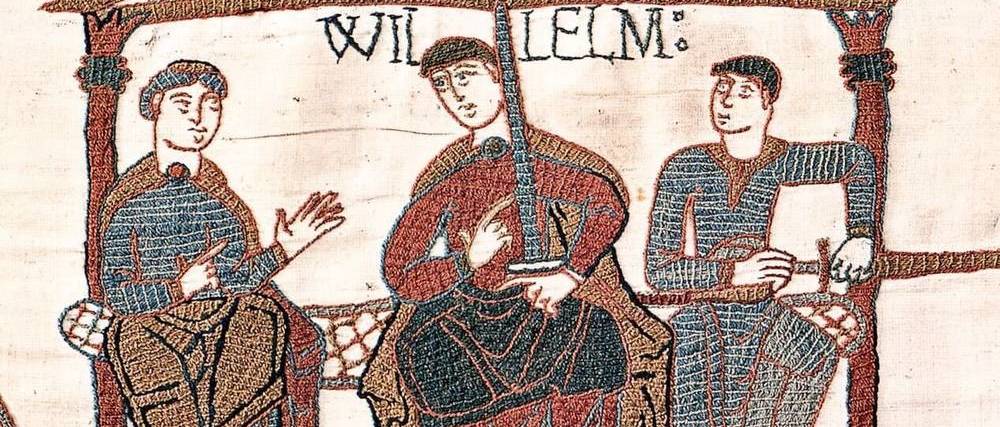William I (The Conqueror)
Posted on 4th January 2021
William I, became known as William the Conqueror, the first Norman King of England.
William was born around 1028 at Falaise, Normandy, France, the illegitimate son of Robert I, Duke of Normandy and his mistress Herleva. Even though illegitimate, he was still Roberts heir.
Robert I, died suddenly in 1035, while returning from pilgrimage; William was now Duke of Normandy. Due to his young age, his great-uncle, Robert II, Archbishop of Rouen served as Regent.
Many people were unhappy to be ruled by a child born out of wedlock, and attempts were made to murder William. His guardian Robert II died in 1037 and many more guardians came and went, either died or murdered.
In 1046 a rebellion led by Guy of Burdundy was to seize William, but William took refuge with King Henry of France.
William had an insecure childhood with few he could trust; this may have contributed towards the formidable and ruthless leader he became.
In 1047 William joined forces with Henry of France and crushed Guy of Burgundy at the Battle of Val-es-Dunes. Anarchy had reigned in Normandy, but this victory was the start of William regaining his control of Normandy and many years of warfare were to follow.
In 1049 William agreed a marriage with Matilda of Flanders, although living together, they were not officially married until 1053. It was to be a successful marriage, producing nine children.
While continuing to consolidate his power, William was to meet his cousin Edward the Confessor in 1051. During negotiations, William was named as heir to the English throne, if Edward himself did not produce an heir.
William had spent many years re-establishing and protecting his lands and by1060 he had consolidated his power and control in Normandy.
Edward the Confessor died on 5 January 1066 and Harold Godwinson was crowned Harold II on 6 January 1066, however others disputed the crown of England, including William and King Harald Hardrada of Norway.
Hardrada invaded England in September 1066 accompanied by Tostig (brother of Harold II). Harold and Hardrada fought at the Battle of Stamford Bridge in Yorkshire; a resounding victory for Harold with both Hardrada and Tostig dying in battle.
Following this victory, Harold and his army marched south to meet William at the Battle of Hastings on 14 October 1066.
Williams army was made up of cavalry and infantry ready for battle. Harold’s troops however had fought and won at Stamford Bridge and were weary from marching to meet William.
William won a decisive victory at Senlac Hill near Hastings. He spent time fortifying his position and then marched on London.
He was crowned King of England on 25 December 1066 at Westminster Abbey.
Reign 1066 - 1087
Much of the south submitted to William but in the north, they continued to rebel and William was to spent much of his time fighting in the north.
In March 1067 William returned to Normandy leaving his half-brother Odo, Bishop of Bayeux and William FitzOsbern in charge of England, however they struggled to control English opposition.
William travelled between Normandy and England many times during his reign. Each time he returned to Normandy trouble broke out in England.
To quell rebellion in the north, in 1069 William set in motion a series of campaigns, later to be known as ‘Harrying of the North’.
These were to last until 1070. Williams armies destroyed crops, burnt lands and flattened villages striking fear into the people. Over 100,000 people were left to die of starvation; nobody was to doubt the ruthlessness of the King.
As William gained victory across the country, he built castles as he went to fortify his position and protect his lands.
In 1085 William ordered a survey by county of the landholdings of England, which took six months to complete, known as the ‘Domesday Book’. The information compiled in this document was unprecedented at that time, and nothing of that magnitude was attempted again for over 600 years.
William I, left England for the last time at the end of 1086 to campaign in France. He was injured in battle and taken to Rouen where he died on 9 September 1087.
He is buried in the Abbey of Saint-Etienne, Caen, France.
Tagged as: Junior Middle Ages
Share this post:





